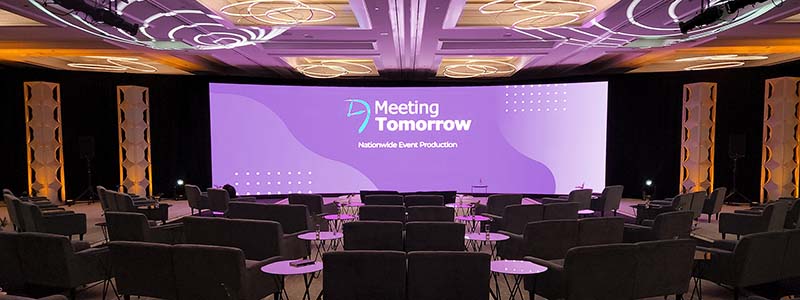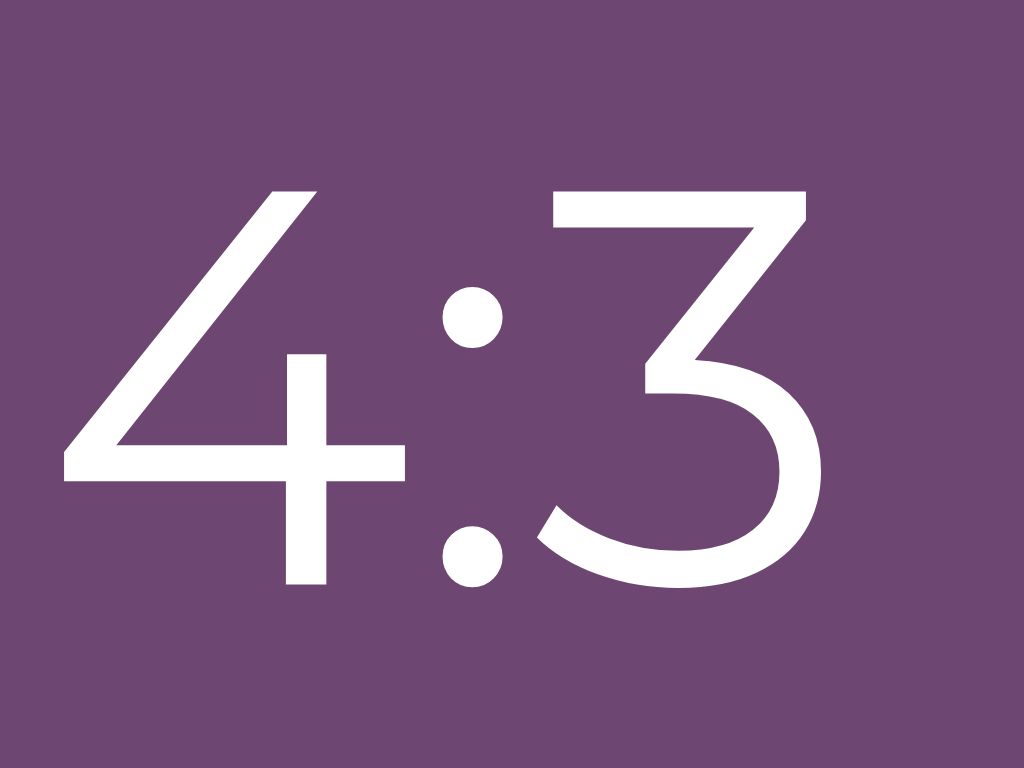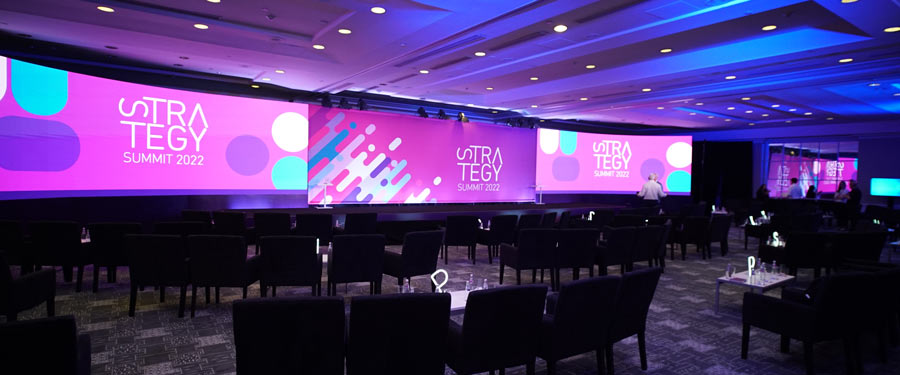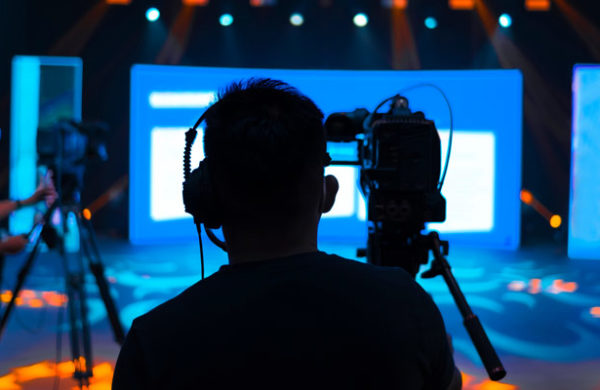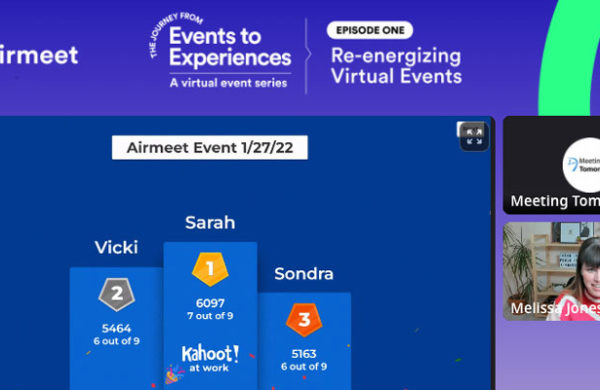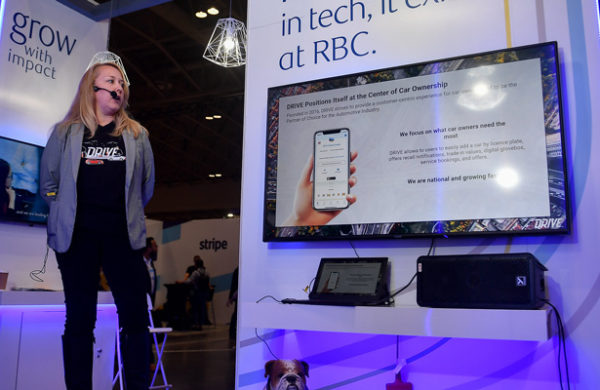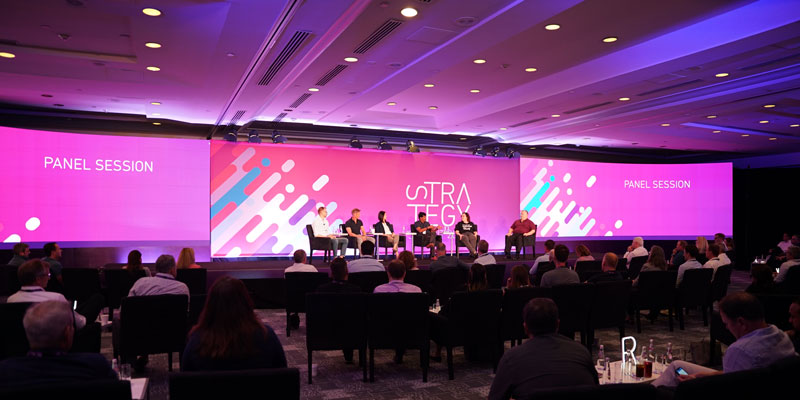
What is an LED Wall?
An LED Wall (sometimes called a video wall) is a large screen that displays graphics, slides, videos, or other visuals. It is constructed of smaller LED tiles that are connected to show one cohesive image. LED Walls can be built in a wide variety of shapes and sizes.
Unlike a projection screen, an LED screen emits its own light, making it much brighter and more vibrant than a projector and screen. Each LED wall tile has a specific amount of pixels. The more pixels each tile has, the higher resolution the wall is — and the closer someone will be able to stand to the wall while being able to see the image clearly.
When are LED Walls used?
LED Walls are used for stage backdrops, decorative stage elements, trade show booths, and many other spaces. They are the brightest, most vibrant option to display content and graphics. One of the most common reasons they’re used is to create an unusual shape or size that can’t be achieved with standard projection screens.
What are some of the reasons event planners choose video walls?
- Brighter and bolder: Simply put, video walls create a “Wow” factor. They’re brighter than typical projection screens, with bolder, saturated colors. They emit light, and overall make a memorable impression that shows off great content and generates excitement and suspense from your audience.
- Bigger: LED Video Walls are bigger than standard projection screens. Any image or graphic you create is going to just be bigger and bolder.
- Small footprint in the room: Often, the video wall will take up less space in your venue than massive projection screens and projectors would.
How should I know whether to choose projection or an LED wall?
- Make sure you have the budget. For many planners, an LED wall is ideal, but it will nearly always require more budget than a traditional projector and screen.
- Since the image can be larger, it creates a more immersive experience, especially if you use a curved LED wall. If you want people to experience a movie theater energy, and to highlight the importance of the content, an LED wall is one way to accomplish that.
- Understand your venue’s lighting. If your venue has a lot of windows or is flooded with natural light, a projector and screen may not be bright enough to see the content clearly.
- Decide whether you need a creative shape. This is the most common use for an LED wall. (Other sizes beyond 16:9 projection screens are custom and not common, and require specialty projection called projection blending.) Meanwhile, an LED wall can be configured in a wide variety of shapes and sizes. This is one of the biggest advantages of an LED wall.
- Do your presenters want an LED Wall? Some presenters may find a lot of value if their content is huge, bright, and right behind them — think of Steve Job’s keynote addresses at Apple. Others may prefer a more standard set-up, where there isn’t a bright wall behind them, and there are only screens on the sides of the stage.
How do you know if your venue can accommodate an LED wall?
Traditional hotels can typically accommodate an LED wall, though there are always exceptions. When your venue is unique or untraditional, that’s when you need to make sure an LED wall can be installed.
- Power: Large LED walls require a lot of power, so a good question to ask your venue is: “My AV company would like to bring in a three phase power distro. Can you accommodate that?” Even if the answer is no, there are other ways to install an LED with professional electricians — but that route needs to be carefully considered.
- Rigging vs. Ground Support: If your vision is to suspend the LED wall and have it high above your audience (also known as rigging_some venues can’t accommodate it. Most traditional venues can (if they have rigging points in the ceiling,) but it’s something you may want to confirm.
- Outdoors: Outdoor LED walls require a generator. There are water/wind resistant LED walls, but there are fewer of these in the market so they might be harder to procure.
How much does an LED wall cost?
It’s very difficult to estimate the cost of an LED Wall, because there are so many factors that impact price. Here are a few major factors.
- Size: LED Walls are typically more expensive with size.
- Pixel Pitch: Pixel pitch is basically the resolution of the wall. Better/higher resolution will cost more, but the images on your wall can be seen more clearly, especially close up.
- Rigging vs. Ground Support: Rigging an LED wall will cost more.
- Curved vs. Straight: A curved wall will cost more than a straight LED wall.
Content: Depending on the aspect ratio of the wall, you may need specialized video equipment to display the content. This may increase cost. Also, you may also need to budget for a graphic designer to create some of your content, if you don’t have one in-house.
How do you create content for an LED wall?
The first thing you’ll need to know is the aspect ratio of the wall. If it’s 16:9, you could create slides and graphics in a standard PowerPoint template. Videos are most commonly 16:9 as well.
However, many LED walls will be a different shape (that’s the cool benefit of LED walls, after all!) If it’s not 16:9, you’ll likely need some graphic design support from your graphic design/creative team, your event production team, or a freelance designer.
Once the size of the wall is confirmed, we will give your graphic designer the exact pixel dimensions they’ll need to create graphics with. We can give them a PowerPoint template, as well. From there, they will create still images and/or videos in these dimensions, and submit them in advance for review and testing.
Even simple images can look very impressive and bold on an LED wall — though your graphic designer can get as complex as they want to with the design.
Those are the technical basics. But what about design overall? How do you take the most advantage of the wall?
There’s a lot to consider. But our biggest tip is to design for the wall. Imagine it in the context of your event — not just on your computer screen. That means consider where the presenter(s) will be standing, what parts of the wall are visible from the audience, and how animations/movement will add to the energy and feeling in the whole room.
There are also some design basics to consider — LED Wall content shouldn’t be mostly white or mostly black, and text needs to be sized correctly.
An example of two LED Walls with custom content created for each one.
How do you create slides for an LED Wall?
There are two ways you can display slides.
One way is to format all the slides to be the size and shape of your LED wall. That means using the template we give you for each slide. This is a great option because it takes full advantage of the wall. Some presenters like to use the wall as one giant slide behind them.
The downside is lots of people aren’t used to designing slides in a unique or extra-wide format, and it might take some creative support.
See below for an example of what a slide specifically formatted for an LED wall could look like.
The other way is that we can put the presenter’s standard 16:9 slides up on the wall, over a graphic backdrop your designer creates. This is called “picture in picture’.” This is a great option for many presenters, because it means they don’t have to format their slides in any unique way, but the wall is still being taken advantage of. See below for two examples.
Ready to learn if an LED Wall is right for your conference or other event? Contact our team, we’d love to learn what you’re planning!
